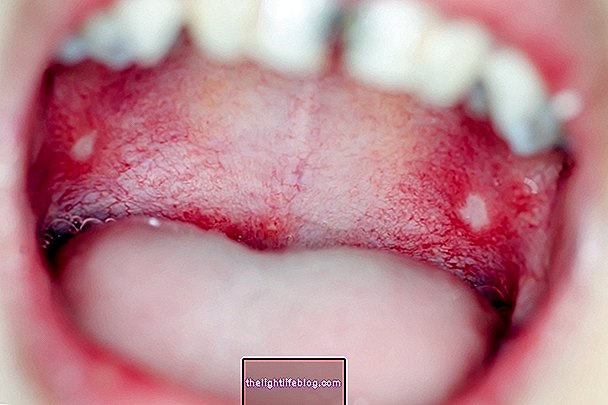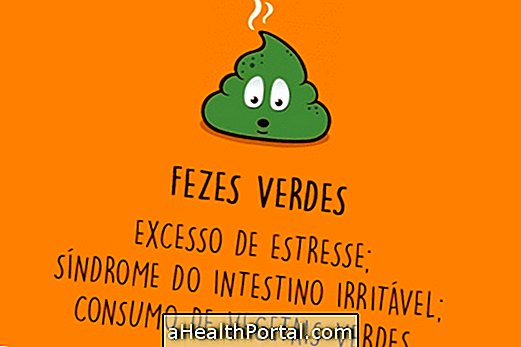The main form of AIDS prevention is to use condoms in all sexual relations. These can be bought at supermarkets, pharmacies and drugstores, but are also distributed free of charge at government health centers and AIDS prevention campaigns.
However, there are other important forms of AIDS prevention, such as:
- Use disposable syringes and needles;
- Wear gloves to handle wounds or body fluids;
- Follow AIDS treatment during pregnancy to avoid contamination of the baby;
- Do not breastfeed your baby in case of AIDS.
HIV is transmitted through the blood and other secretions of the body and it is avoiding contact with these substances that one can avoid contamination. However, there is also a medicine called Truvada that is indicated to prevent HIV, which can be taken before exposure to the virus or up to 72 hours later. This remedy is not yet commercialized in Brazil and is under study so that it can be used by SUS.
How to Put the Male Condom
It is necessary to know how to put the condom correctly to be really protected and the male condom should be placed on the erect penis before any intimate contact, as shown in the following pictures, being it necessary to first check the date of the condom and press the tip of the condom to avoid accumulation of air and unwind to the base of the penis.


In addition, the condom should be removed carefully to avoid touching the secretions so as not to be contaminated, and to withdraw the condom, the tip should be held, where the secretion is, swivel slightly, tightening so that the secretion does not go out and then pulling the condom, pulling it out of the penis and throwing it in the trash knotting to keep out liquid.
- 5 most common mistakes when putting condoms
- What to do if you had unprotected sex
AIDS transmission occurs through contact with blood, vaginal secretions, sperm, or breast milk contaminated with the HIV virus.
The HIV virus, upon entering the body of the individual, will weaken your immune system and cause symptoms such as fever, general malaise, dry cough and sore throat which usually only manifest 3 to 6 weeks after infection and which can be mistaken for an influenza or cold. Thus, if the individual has had some risk behavior, such as intimate contact without a condom, or used syringes from an infected individual, he or she should undergo an HIV test after 40 to 60 days to confirm whether or not they have AIDS.
How AIDS is transmitted
The transmission of AIDS occurs only when there is direct contact with the blood or secretions of an infected individual, and is not transmitted through kissing or contact with the sweat of a contaminated individual, for example.
| If you get AIDS through: | You can not get AIDS through: |
| Sexual intercourse without a condom with an infected individual | Kissing, even in the mouth, hugging or shaking hands |
| From mother to child through childbirth or breastfeeding | Tears, sweat, clothes or sheets |
| Direct contact with infected blood | Use the same glass, cutlery or dish |
| Use the same needle or syringe as an infected individual | Use the same tub or pool |
Although AIDS is a highly contagious disease, it is possible to live, have lunch, work or have a loving relationship with an infected person, because kissing, sharing cooking utensils or shaking hands, for example, do not transmit AIDS. However, if the person with HIV has a cut in the hand, for example, some care is needed, such as not shaking hands or wearing gloves to avoid contact with blood.
See what symptoms of AIDS are and how to get tested for HIV:
Vertical transmission of AIDS
Vertical transmission of AIDS refers to the contamination that passes from the mother carrying AIDS to her baby, whether through the placenta, labor, delivery or breastfeeding.
This contamination can occur if the mother's viral load is too high or if she breastfeeds the baby.
To avoid vertical transmission of AIDS, it is recommended that the mother follow the treatment even during pregnancy to minimize her viral load and not to breastfeed her baby by offering another woman's breast milk that can be obtained from the bank of human milk.
Learn more about AIDS treatment in pregnancy in: AIDS in pregnancy.
Did I catch Aids?
To find out if you get AIDS, it is necessary for the general practitioner or the general practitioner about 3 months after the blood test, and usually if the sexual relationship happened with an HIV-infected patient, the risk of having the disease is higher.
Thus, anyone who has had any risk behavior and suspects that they may have been infected with the HIV virus should do the HIV test, anonymously and free of charge, at any CTA - testing and counseling center. However, the test can also be done at home safely and quickly. See: HIV home testing.
It is recommended to take the test after 40 to 60 days of risky behavior, or when the first AIDS-related symptoms appear, such as persistent candidiasis. See: Symptoms of AIDS.
In some cases, such as health professionals who have stung on infected needles or for rape victims, it is possible to ask the infectious disease doctor to take a prophylactic dose of HIV medicines for up to 72 hours, which decreases the risk of developing the disease.





















